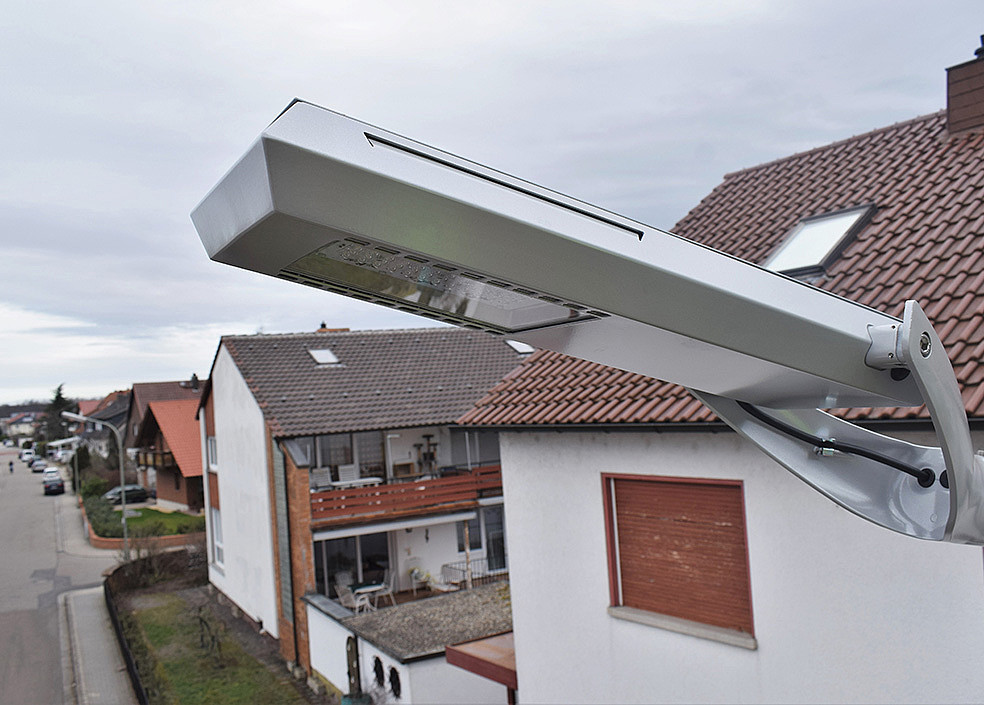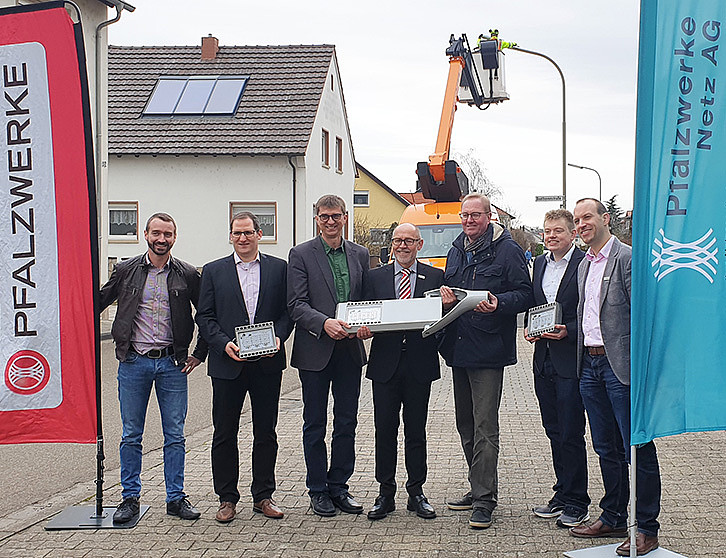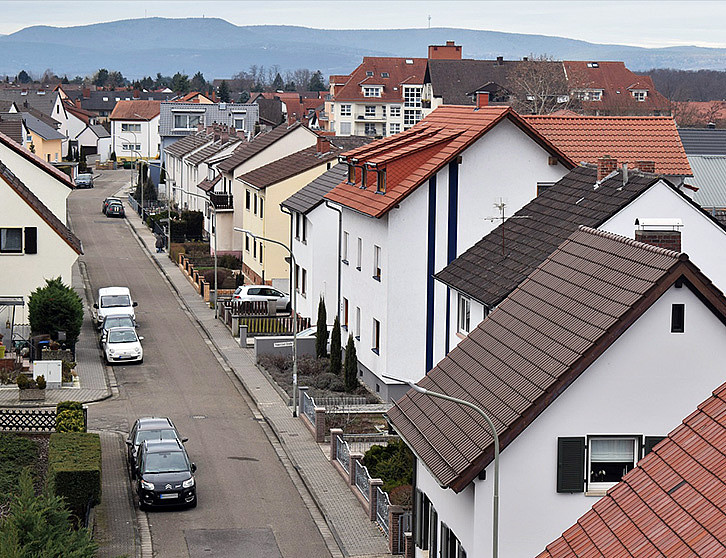Published on February 16, 2021
Radiant balance – energy-saving LED streetlights prove themselves in practical tests

A total of 8,200 operating hours, no failures of the LED modules and no signs of aging on the LEDs used - this is the balance of the test field with the newly developed mid-power LED streetlights after two years of operation. In February 2019, GRATZ Luminance GmbH, Pfalzwerke Netz AG and KIT, in cooperation with the local municipality of Maxdorf, opened the streetlight test field in the Musikerviertel district. The LED luminaires, equipped with a clever circuit concept from KIT, have been in use every night since then and have proven their advantages. Residents are satisfied: "The new luminaires are brighter than the conventional luminaires, which means that the test street is now better illuminated. On the premise that these luminaires consume less electricity and shine brighter at the same time, I would be in favor of converting to the model in the village," says Maximilian Garczorz from Maxdorf.
Technology progress in figures
In direct comparison with conventional luminaires, there is a clear difference. The illumination of the test road is much more precise. Instead of a few large LEDs many small ones now form a luminous surface, which is also less dazzling. In addition to the increased visual comfort, it is above all the technical facts that speak in favor of the tested luminaires.
- The new LED modules have a higher overall luminosity (6,100 lumens) with lower energy consumption than the previously installed luminaires (5,800 lumens).
- In total, the new LED modules are about twice as energy efficient as the previously installed fluorescent fixtures (previously only 68 lumens/watt, now 127 lumens/watt). This means that 30 percent electricity savings would be possible with the test lights compared to the previous LED standard.
- With 4,100 operating hours per year and estimated electricity costs of 25 cents/kilowatt hour, this results in annual electricity cost savings of 37.93 euros per luminaire.
Circuit concept from KIT
The key technology that allow these best possible values is the circuit concept developed by Dr. Michael Heidinger at the Light Technology Institute of KIT. Here, mid-power LEDs are fitted in any number of rows, which are interconnected via a parallel circuit. An upstream current regulator ensures that each LED row is supplied with the same amount of electricity. This new type of balancing circuit ensures that the LEDs are evenly loaded. Unlike previously used switching concepts, a short circuit of a single LED does not affect the functionality of the luminaire.
Thanks to the high reliability of the LED modules and the maintenance-friendly design of the entire luminaires, the annual maintenance and main costs of the new LED modules are about one third lower than for the previously installed models. This is a clear advantage compared to old luminaires, which according to experience have to be replaced after two to three years. The other components of the new streetlight are similar to other LED luminaires, except of the heat sink: here, GRATZ Luminance has incorporated its experience from the automotive sector. The innovative geometric design of the heat sink, which also replicates the luminaire module, ensures optimum thermal management – the decisive criterion when using LED technology. In this way, the illuminants demonstrably provide a constant luminous flux over many burning hours for reliable illumination.
Commercialization still pending
GRATZ Luminance finished the last measurements on the luminaires at the end of 2020. Despite the consistently positive measurement results, the test series in the field will end. "Unfortunately, we will not bring this promising product to market. Series production would require another high level of investment, for which user demand is currently still too low," reports Managing Director Klaus Müller wistfully. As soon as market opportunities become apparent and the new technology meets with greater interest, the entrepreneurs will tackle the commercialization of the mid-power LED luminaires again.
Public lighting is used for safety and orientation in the path and road network. "Nowadays, public lighting systems must be operated with economic, energy and environmental criteria in mind. The streetlights developed in the project clearly meet these requirements, as evidenced by the measurements taken throughout the project," confirms Dr. Stefan Lang from the Technology & Innovation department of Pfalzwerke Netz AG.However, the decision on a comprehensive modernization of the streets, the willingness to invest and the selection of the type of luminaire lies with the municipalities themselves and not with the subcontracted utility service providers. The 25 luminaires installed in the test area will also be available to decision-makers in the future. They will remain in Maxdorfer Strasse and continue to provide good illumination.
Breaking new ground
Developer Heidinger is nevertheless proud that the test field has been consistently positive: "The long-term test of the luminaires shows that my parallel circuit concept for the mid-power LEDs is delivering the hoped-for improvements.0022 Effective street lighting improves safety on the roads, saves energy and thus costs. Heidinger adds: "The circuit concept can be applied in many ways and is currently being validated in other lighting applications, such as UV drying.". In the meantime, he is also devoting himself to new projects and is currently setting up his own company "Digital Power Systems". Here, he is developing customer-specific power supplies, for example for automation, medical, building and lighting technology.




comments about this article
No comments